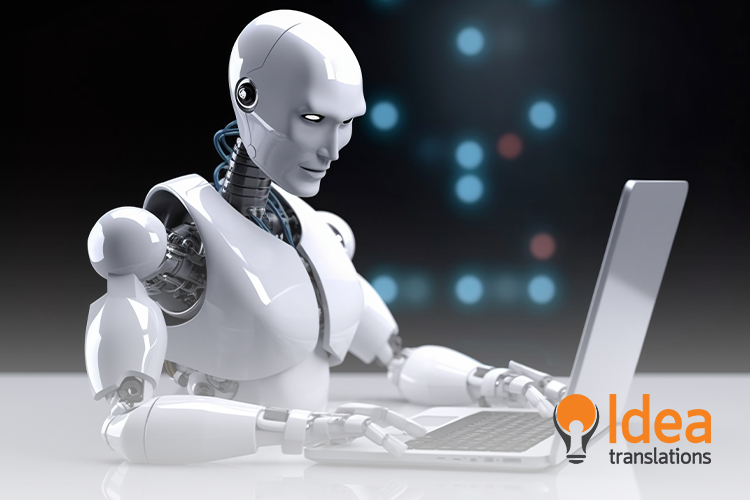
Artificial Intelligence: How to Build Context and Get Quality Translations
As the processing power of computers has advanced, so has the development of artificial intelligence (AI). AI refers to machines’ ability to perform tasks previously thought to require human intelligence. Various industries, including video games, language translation, and robotics, have already embraced AI. Moreover, with ongoing advancements like ChatGPT and new AI capabilities emerging daily, almost every industry stands to benefit.
The recent advancements in AI technology have sparked significant interest in adopting machine translation, prompting linguistic professionals to increasingly rely on AI for enhanced productivity. How does this dynamic relationship work, and what strategies can professionals employ to get successful outcomes out of AI translation?
New Players in the Industry
The localization industry is facing peculiar times. As different researchers have pointed out, the incorporation of state-of-the-art neural machine translation (NMT) within computer-assisted translation (CAT) tools has made technology more available than ever for linguists to use.
This type of tools, which use artificial neural networks to learn from large amounts of data from bilingual texts, can produce more accurate translations than traditional translation software. Anyway, since AI algorithms make predictions and identify patterns that humans may not detect, such technology becomes especially useful in some areas such as data analysis and pattern recognition.
In 2020, the global revenue in the artificial intelligence market, encompassing the software, hardware and services segments, amounted to approximately USD 281.4 billion.
Source: Statista
Overall, among the benefits of using AI for linguistics purposes, we may find:
• Greater productivity
• Lower costs
• Lower time spent on processes
• Greater production of global content
Complementing Forces
Nevertheless, the increasing demand for accurate and contextualized translations cannot depend only on artificial intelligence. When examining the process that linguists go through to find and correct the mistakes made by AI when translating difficult terminology, some experts point out that such context-building process involves the recollection of terms suggested by the AI and the analysis of their suitability in the context of each translation.
50% of industries of different types around the world have adopted artificial intelligence in at least one of their processes.
Fuente: McKinsey
In this sense, the best option is turning to hybrid translations, where a fusion of AI as well as human professionals may provide the best solution in terms of quality. That is the ideal equation when aiming for efficiency in terms of costs and time. In fact, it is expected that the demand for more complex translations —requiring a more solid understanding of the language and its cultural context— will continue to increase.
Sectors such as sign language translation, for example, still represent a huge challenge for artificial intelligence. Currently, there are over 70 million deaf people worldwide, communicating in over 300 different sign systems. However, as indicated in a Slator article, such visual languages have been largely neglected by the field of natural language processing (NLP). There’s still the necessity of developing effective tools for recognizing, translating and generating sign language.
Human input is still essential. The best way of fulfilling the expectations when approaching translation projects is to rely on experienced professionals that can actually grasp the full context of a translation to reduce ambiguity and errors.



